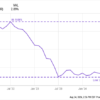
Sep. 1—Heat pumps, which generate heat to homes in place of gas-fired furnaces, are getting more use nationally. They’ve been touted as a tool that can cut both greenhouse gas emissions and energy use.
The case for them in Alaska, with frigid conditions that can prevent heat pumps from working year-round, isn’t always so clear.
But that might change as fuel prices rise, say Alaskans who are working to expand their use in the state.
So far, few households in Anchorage appear to have installed heat pumps. In much of Southcentral Alaska, buildings are heated with relatively inexpensive natural gas, undercutting the economic benefit of heat pumps.
But the economics could change in the coming years, if a looming shortage of Cook Inlet gas boosts the price of gas as expected, advocates say.
Heat pumps are already fairly common in Juneau, where they operate efficiently in the area’s relatively warm conditions. And their numbers are also growing in Northwest Alaska, where they replace costly heating oil.
In winter, electric-powered heat pumps “steal” heat from the outside air to heat a building or provide hot water, said Ingemar Mathiasson, who runs an effort in Northwest Alaska to put heat pumps in villages under a $50 million federal grant.
Heat pumps have already been installed in many homes in the region as a test case starting in 2016, he said. The appliances run part of the year. They can save up to $2,500 a home annually, before residents in the region revert to heating oil as temperatures drop, he said.
Heat pumps don’t work in Alaska’s lowest temperatures, experts say. But some models can work to about 20 degrees below zero, and the technology is improving, Mathiasson said.
As prices for natural gas and stove oil rise, he said, “most likely heat pumps will increase all over Alaska, like they have in Southeast Alaska.”
Different economics in different regions
Some heat pump owners throughout Alaska say they like them because they reduce greenhouse gas emissions. Others tout the savings they provide. They act like refrigerators, adjusting temperatures using a refrigerant. They look like a small air conditioning unit outside a house.
Heat pumps on average can cost about $8,500 installed, advocates say. Homes should have good insulation and not be drafty, something an energy auditor can help with. A licensed contractor is typically required to pressurize the system with the refrigerant, they say.
Andy Romanoff, with Alaska Heat Smart in Juneau, a nonprofit that works to increase clean energy use in Alaska households, said heat pumps at this point generally won’t save money for Anchorage households.
“It costs about roughly 20% more to heat a home with a heat pump in those natural gas regions because natural gas is still so inexpensive,” he said. “But as it rises, that equation starts to turn around and it becomes more and more beneficial to be heating with electricity.”
Online heat pump calculators illustrate the costs in communities across Alaska, based on a household’s unique conditions like energy use and construction type.
“No two homes are alike,” he said. “No one solution fits all. Homes have different heating conditions, different air flow, building quality and other factors.”
Romanoff said heat pumps work “fantastic” in Southeast Alaska communities, where temperatures rarely fall below zero. They can save a great deal on heating bills there, especially in areas with lower electric rates from hydropower generation.
Alaska Heat Smart plans to use a $38.6 million federal grant to install heat pumps in 6,100 homes in coastal communities from Southeast Alaska to Kodiak. It worked with Southeast Conference, an economic development group, to win the grant.
The grants could be as high as $8,500 per household, depending on income. In some cases, the grants will cover the full cost of the heat pump and installation, Romanoff said. Federal tax credits can also help cut costs.
The heat pumps could save up to 50% on household heating costs by replacing heating oil in that part of Alaska, according to a statement from Southeast Conference.
The program does not include Anchorage, Romanoff said.
Motivated by climate change
Southcentral Alaska families who use heat pumps say they’re happy with them.
But they’ve often taken unusual steps in their homes that boost the efficiency of heat pumps, such as making them more airtight and beefing up insulation.
Retired Anchorage residents Cindy and Wray Kinard installed a heat pump in 2022 in their well-insulated home on the Hillside.
It cost about $15,000 to buy and install the heat pump system, Cindy Kinard said.
The couple runs the heat pump more than half the year, she said.
It provides hot water, and heats the radiant-floor heating system that keeps the house comfortable at 69 degrees, she said.
The gas-fed boiler takes over when temperatures drop for several months.
Cindy Kinard said the heat pump reduces the couple’s climate footprint, their main goal. It saves some money, thanks partly to solar panels they also installed that lower their electricity price.
“Our experience has been good,” she said. “We are seeing lower gas consumption and less use of the boiler.”
Their heat pump could save more money if gas prices rise, she said.
“We would get a greater return on their investment,” she said.
‘Future proofing’ with heat pumps
Julie Hasquet, a spokeswoman with Chugach Electric Association in Anchorage, said heat pump sales are growing nationally, outpacing gas-furnace sales.
The Anchorage utility provides a rebate of up to $900 for residential customers who install a qualifying heat pump system, and up to $1,500 for small commercial members, she said.
The appliances reduce gas use by about 25% compared to a gas heating system, she said. The utility is looking to increase its renewable power use and reduce gas consumption.
“The economics of operating a heat pump will continue to improve” as gas prices rise and the renewable use grows, she said in a statement.
Griffin Hagle-Forster and his wife use two heat pumps to warm both water and air at their two-story house near Midtown Anchorage.
They retrofitted the 1950s-era house to make it super insulated and airtight. With the heat pumps, they don’t use natural gas at the house. They even removed the gas meter.
Their heat-pump system, which cost about $23,000, also filters the air in the house, said Hagle-Forster, who is chair of the Cold Climate Housing Research Center.
The couple was motivated in part by climate change concerns, but also wanted to “future-proof” their home against the gas crunch, he said.
“People kind of have to confront the issue,” he said. “We’re running out of our cheapest energy source and our climate is changing. We really need to build like the future depends on it.”
The house uses about 75% less energy than a typical home its size, said Hagle-Forster, also an executive at an affordable housing nonprofit.
But the system currently doesn’t save money, something he expected before it was installed, he said.
Their electric bills cost about $350 a month on average, he said. Solar panels would help offset costs, but they haven’t installed those yet.
Hagle-Forster said he’s still working to seal up gaps in the house to help the heat pumps.
Last winter, he used space heaters to supplement heat on the second floor. And when the temperature plunged to 20 below in Anchorage last winter, the system struggled to quickly heat water, he said.
“We can be left with a lukewarm shower,” he said. “It’s not ideal, but it’s not the end of the world.”
Savings might come in the future, he said.
“Maybe in five to eight years, we’re going to be at that tipping point where the cost to run a heat pump versus the escalated price of scarce natural gas is going to be more favorable,” he said.
EMEA Tribune is not involved in this news article, it is taken from our partners and or from the News Agencies. Copyright and Credit go to the News Agencies, email news@emeatribune.com Follow our WhatsApp verified Channel





